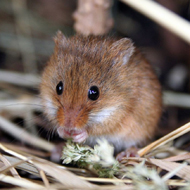
Harvest mouse discovery ends 25-year local extinction
The harvest mouse, or micromys minutus, has been found in Selbourne, Hampshire, birthplace of the famous naturalist Gilbert White, who was responsible for its identification in 1767.
Thanks to a pioneering new farming method, local farmers and volunteers have found over 150 nests around the village of Selborne, where it was first discovered.
Immortalised by Beatrix Potter, the harvest mouse discovery is the result of a greater farming concept.
The Selborne Farmer Cluster addresses the need to work collaboratively to conserve the environment beyond the confines of individual farms.
Elizabeth Truss, environment secretary, said: “The Selborne farmer cluster is a great example of responsible landowners thinking beyond their own fields, meadows and woodlands.”
The harvest mouse discovery has delighted the environment secretary further, as like many she was an “avid reader” of Beatrix Potter in her youth.
An advocate of the farmer cluster model, she congratulated the Selborne farmer cluster for their "innovative approach" to local land management.
“This approach to land management is at the heart of our 25-year Environment Plan. Without a healthy environment, we won’t have a healthy farming industry."
The 25-year Environment Plan is a conservation scheme that collectively creates connected habitats for local wildlife.
Led by the Game & Wildlife Conservation Trust, the scheme works with the South Downs National Park to conduct surveys, lay hedges and maintain grass headlands to create habitats.
Covering 4,000 hectares and consisting of 11 farmers and volunteers, the scheme is one of nine clusters established. The farming method has been established to improve biodiversity and subsequently boost the economy.
Image credit: Lukasz Lukomski/CC BY 2.0/Wikipedia



 The Federation of Independent Veterinary practices (FIVP) has announced a third season of its podcast, Practice Matters.
The Federation of Independent Veterinary practices (FIVP) has announced a third season of its podcast, Practice Matters.